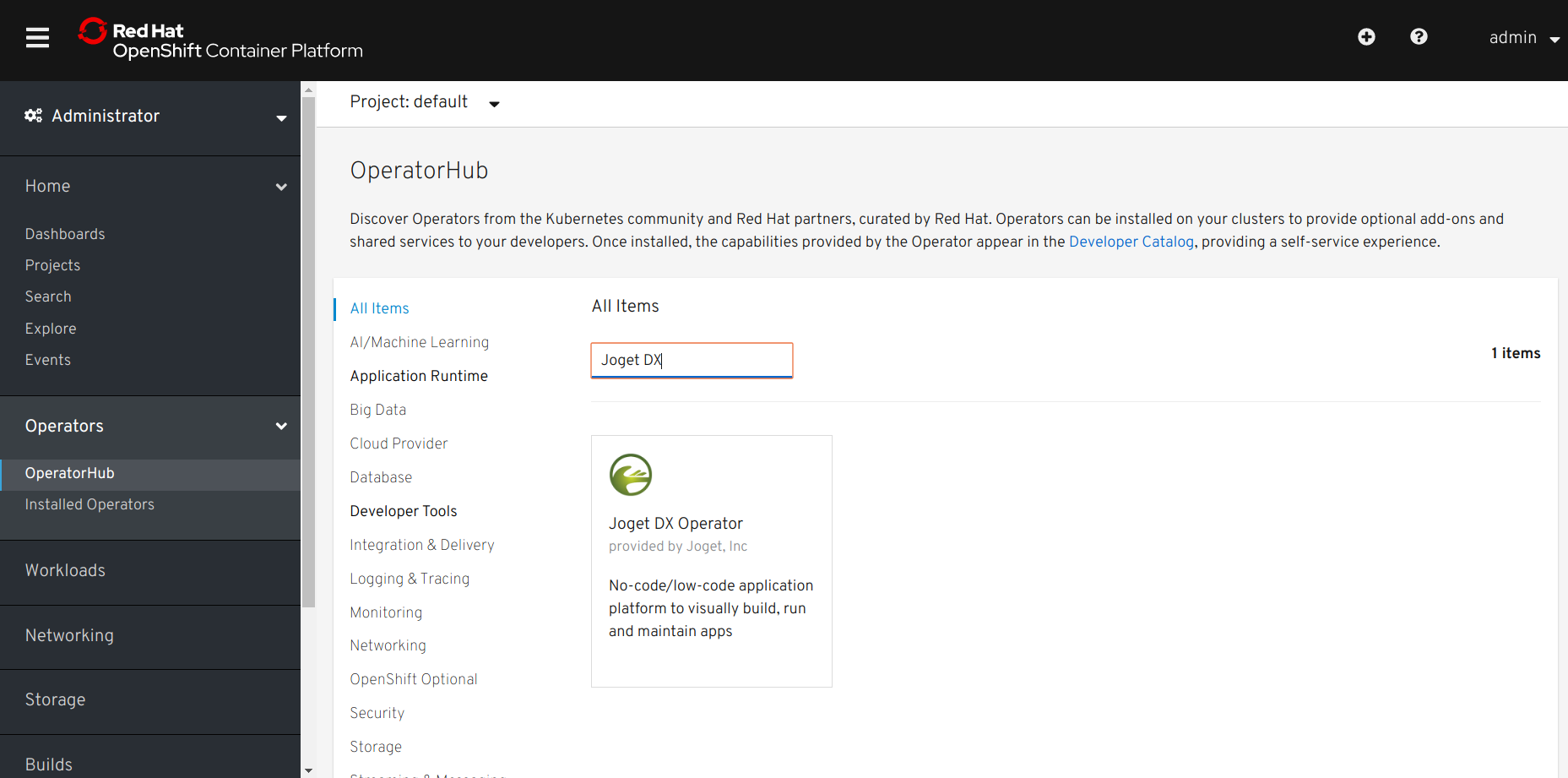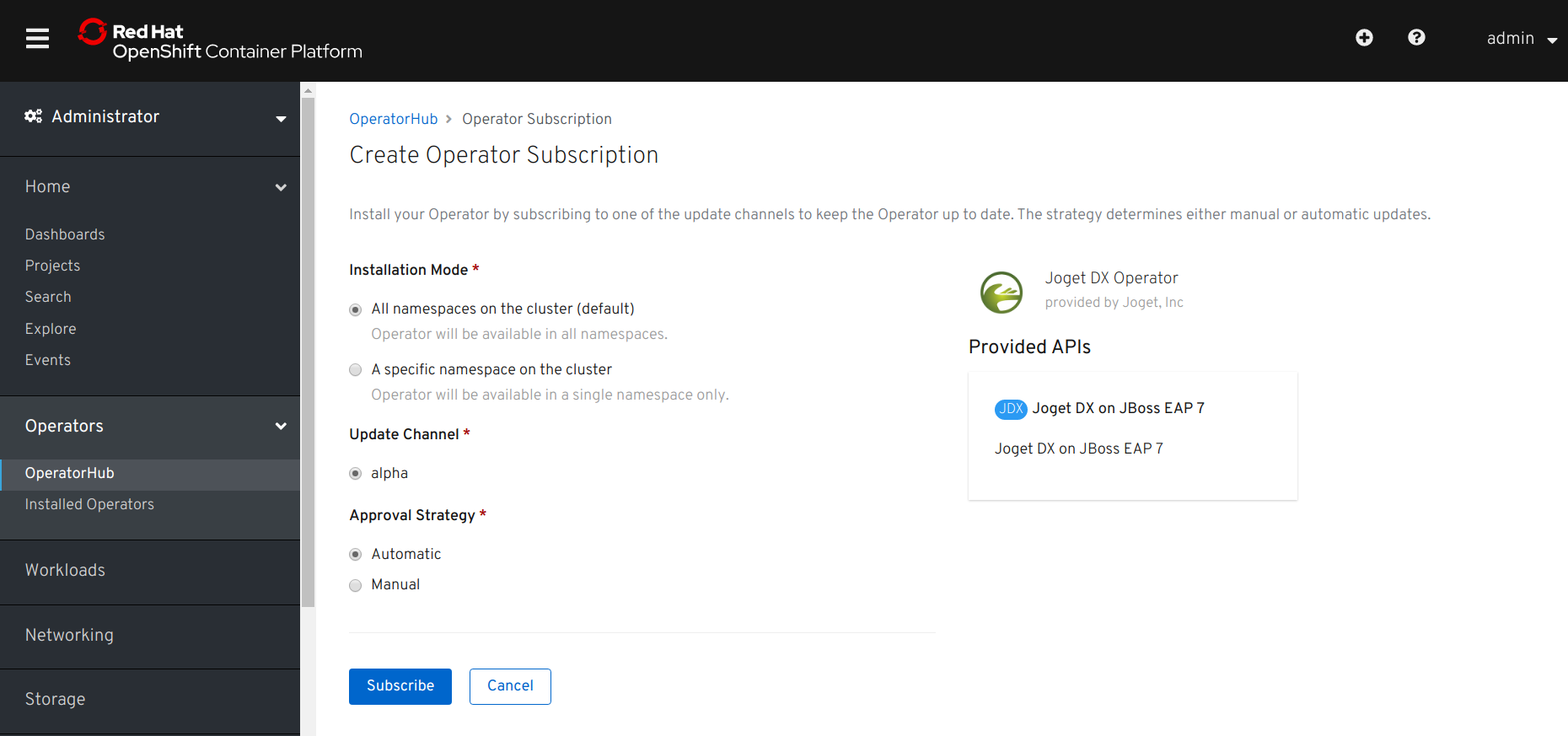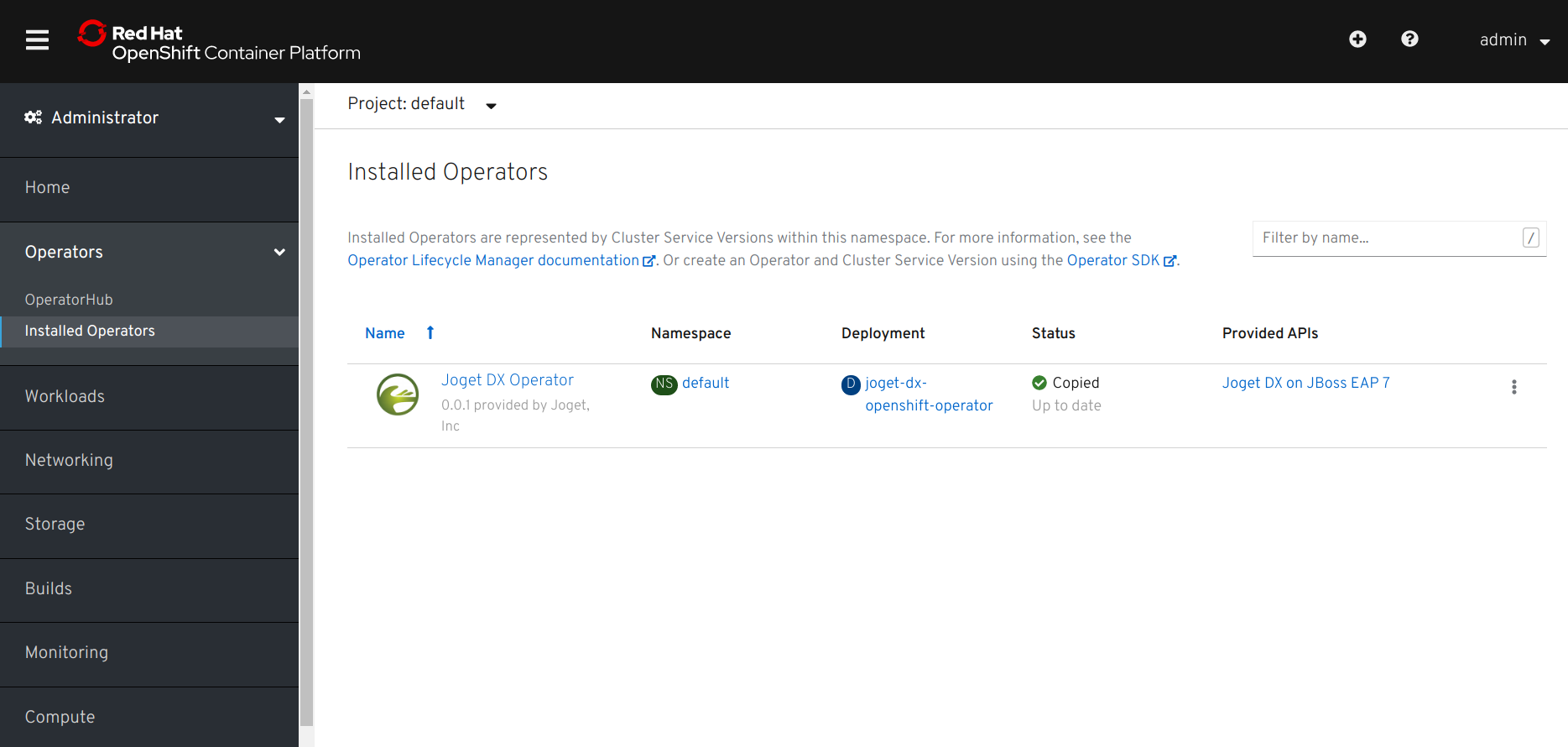Tutorial Part 1: Install Joget DX Operator from the OperatorHub
The Joget DX Operator enables customers to rapidly deploy, manage and scale a Joget DX cluster on Red Hat OpenShift. As a certified Operator, it is listed in the OpenShift Embedded OperatorHub catalog. Joget DX is a development platform as well as an application runtime, so the Joget DX Operator is listed under both the Application Runtime and Developer Tools categories.These steps assume that you already have a running OpenShift 4 cluster. You can access https://try.openshift.com/ and select Openshift 4 playground to setup a new cluster.
1.1 Install Joget DX Operator as Cluster Admin
Login to the OpenShift console as the cluster admin
Browse to Catalog > OperatorHub and search for Joget DX
Select the Joget DX Operator, and click on the Install button
Click on the Subscribe button to install the Joget DX Operator.
Browse to Catalog > Installed Operators and select Joget DX Operator to confirm that the operator has been installed successfully.
Tutorial Part 2: Create a Joget Cluster with the Joget DX Operator
2.1 Create New Project and Deploy Database
Now that the Joget Operator has been installed, login to the OpenShift console as a normal user.
Browse to Projects and click on the Create Project button. Enter a name and click on Create.
As a prerequisite, you will need to deploy either a MySQL or MariaDB database in the project.
The fastest way to deploy MySQL would be to use the OpenShift CLI e.g.:
# deploy persistent mysql export DB_APP_NAME=jogetdb export MYSQL_DATABASE=jwdb export MYSQL_USER=joget export MYSQL_PASSWORD=joget oc new-app openshift/mysql-persistent --name $DB_APP_NAME -p DATABASE_SERVICE_NAME=$DB_APP_NAME -p MYSQL_USER=$MYSQL_USER -p MYSQL_PASSWORD=$MYSQL_PASSWORD -p MYSQL_DATABASE=$MYSQL_DATABASE
Alternatively, you can deploy using the OpenShift Console.
Browse to the project, go to Workloads and click on add other content.
Select Database.
Search for MySQL.
Select MySQL then click on Instantiate Template.
Key in the following configuration and click on Create.
- Database Service Name: jogetdb
- MySQL Connection Username: joget
- MySQL Connection Password: joget
- MySQL Database Name: jwdb
Go to Workloads → Deployment Configs to verify that the MySQL database has been deployed successfully.
2.2 Deploy Joget DX using the Joget DX Operator
Browse to Operators > Installed Operators.
Select the Joget DX Operator, and click on Create Instance.
By default the configuration for “name” is “example-joget” and “size” is 1 (the number of required Joget instances). Modify the values as required, click Create.
The Joget DX Operator will automatically start to deploy the required number of Joget DX instances along with all the required resources, which should take a few minutes.
Select the created Joget name, and click on Resources to see the resources automatically created and managed by the Joget DX Operator.
Click on Events to see the events as they happen
2.3 Complete One-Time Joget Database Setup
Browse to Home > Projects and select the Joget DX project. Click on Workloads tab and select Joget DX deployment. After a few minutes, you should see at least 1 available MATCHING PODS.
Select Resources to see the created Services and Routes. Copy the Location in the created Route. That is the URL to access Joget DX from an external browser.
Access the Joget DX URL and in the Database Setup page, key in the database configuration of the database deployed earlier and click on the Save button.
- Database Type: MySQL
- Database Host: the service name of the database e.g. jogetdb
- Database Port: 3306
- Database Name: the configured database name e.g. jwdb
- Database User: the configured username e.g. joget
- Database Password: the configured password e.g. joget
Once the setup is completed, click on Done and you will be brought to the Joget DX App Center.





















